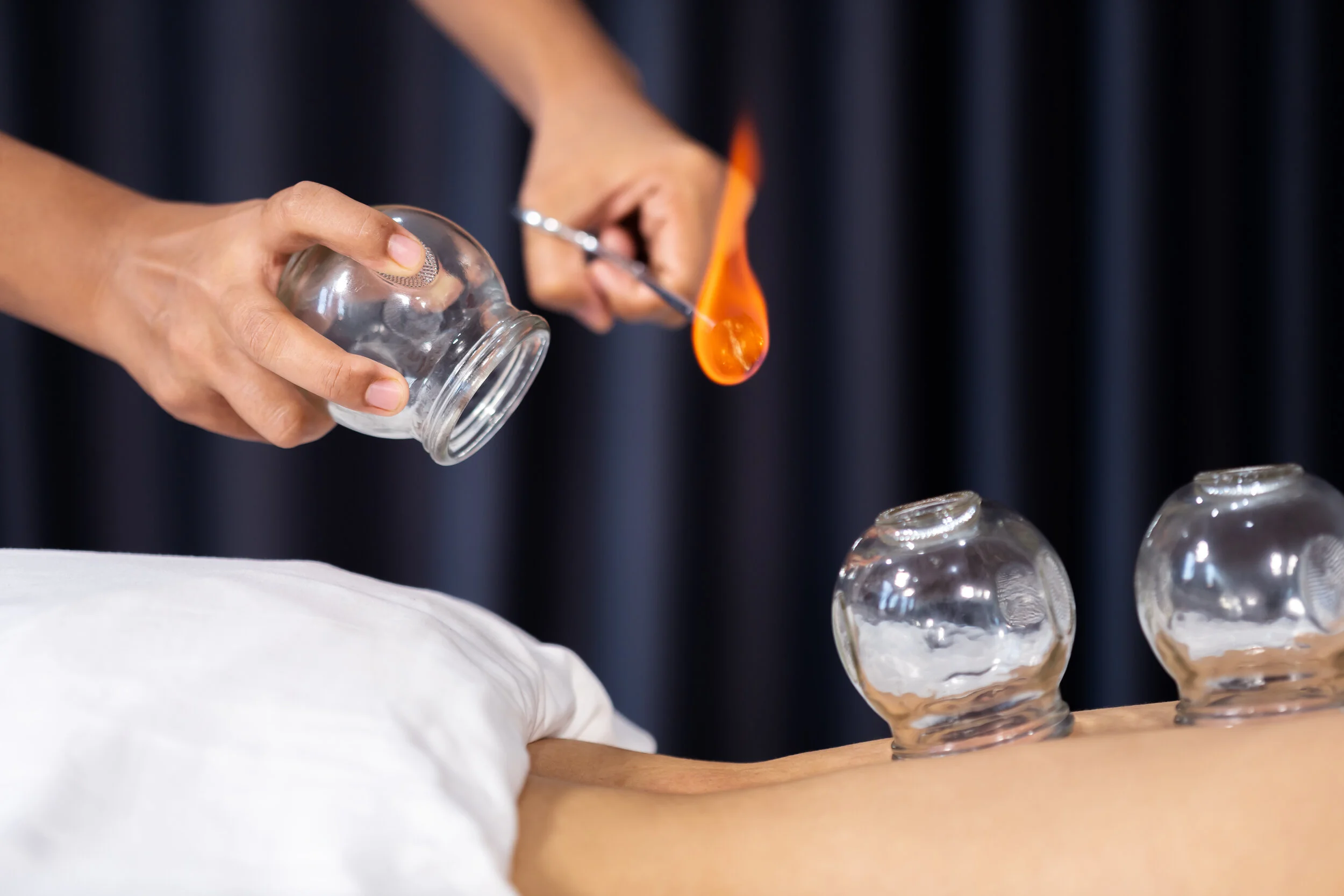Cupping is one of the oldest methods of traditional Chinese medicine that dates back to the early fourth century.
Cupping can be used in addition to acupuncture or a stand alone treatment. During a cupping treatment, glass cups are warmed using a cotton ball soaked in alcohol, lit, then placed inside the cup. The burning substance inside the cup removes all oxygen, which creates a vacuum. The cup is then turned upside-down so the acupuncturist can place the cup over a specific area. The vacuum anchors the cup to the skin and pulls it upward on the inside of the glass as the air inside the cup cools. The cups can either be left in one position or moved over the surface of the body (moving cupping) depending on the condition being treated.
Drawing up the skin is believed to open up the skin’s pores, which helps stimulate the flow of blood, balances and realigns the flow of qi, breaks up obstructions and creates an avenue for toxins to be drawn out of the body.
Cupping can help open up the skin’s pores, which helps remove toxins from the body, balance and realign the flow of Qi, and stimulate the flow of fresh blood, lymph and Qi to the affected area and throughout the body. It can help break up obstructions and creates an avenue for toxins to be drawn out of the body.
Note: Because of the blood-borne nature of cupping and gua-sha, these techniques should only be administered by licensed practitioners who are trained in blood borne pathogens, use proper equipment, sanitization techniques and are malpractice insurable.
Conditions cupping can be used to treat:
flu
colds
coughs
back and muscle pain
aches and myriad other pains
poor circulation
anxiety
red itchy skin conditions (though cups are not applied to inflamed areas)
allergies
fevers
respritory conditions such as bronchitis, asthma, congestion
arthritis
gastrointestinal disorders
depression
reduce swelling
Gua Sha
Gua sha is a similar therapy to cupping in that it is used to release the Exterior, expel pathogens and move stagnant Qi and Blood. It is an ancient therapy associate with the extraordinary therapies of acupuncture.
Gua sha (pronounced gwahshah) is the practice of using a tool to apply pressure and scrape the skin to relieve pain and tension. It may also be called skin scraping, spooning or coining. A gua sha treatment may cause light bruising, which often appears as purple or red spots/lines known as “petechiae” or “sha”. The skin may retain a redness or discoloration for 3-4 days and is a normal response to the treatment. Gua sha is not supposed to be painful but may cause discomfort in some people.
Gua sha can benefit the immune system and reduce inflammation. Ability to breathe is positively affected by gua sha in asthma, bronchitis, emphysema and COPD. It has been used to stabilize acute asthma and immediately raise blood oxygen levels in patients with COPD.
Conditions gua sha can be used to treat:
Pain
Stiffness
Fever
Chills
sore throat
cough
wheeze
lung problems
cold
nausea
vomiting
fatigue.
perimenopause symptoms: sweating, insomnia, headaches
It can be used to mediate the inflammatory effects of ulcerative colitis and is effective in acute and chronic internal organ disorders including liver inflammation in hepatitis. Microtrauma (small injuries to the body such as the bruises caused by gua sha) creates a response in the body that may help break up scar tissue and may also help with fibrosis.
Cupping & Gua sha is not recommended for people who:
have medical conditions affecting the skin or veins
bleed easily
take medications to thin their blood
have deep vein thrombosis
have an infection, tumor, or wound that has not healed fully
have an implant, such as a pacemaker or internal defibrillator

